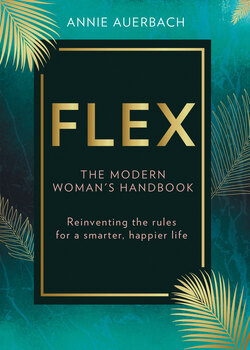Читать книгу FLEX - Annie Auerbach - Страница 8
ОглавлениеFlex is a manifesto for living and working on your terms. It means looking at the established, rigid ways of doing things and asking: ‘Is this really working for me?’ If the answer to that question is ‘No’ then read on, because this book is for you.
When we learn how to flex we gain a superpower that allows us to challenge what is holding us back and reinvent the rules for a smarter, happier life. Because things are changing for women across the globe. We are getting married and having children later, if at all. Dual-income families have replaced the traditional template of man as breadwinner and woman as homemaker. Technology allows us to work differently and understand ourselves better.
But the old systems still persist. We’re continually bashing up against inflexible structures that were built by, and for, men. We are trying to do everything, but following a rulebook we didn’t write.
Cartoons of working women depict us as harassed multitaskers with eight octopus arms, juggling food, lipstick, laptop and wine. Who actually wants to live their lives like this? Who wants to be a jittery octopus lady constantly time-pressed and on the verge of meltdown? Not me.
I’ve been thinking about flex for a long time. I’ve worked flexibly for 20 years in many different guises – part-time, remote working, through a portfolio career and freelancing. I am now 40, I run my own business and I have two daughters under 10, a husband and a small snappy dog – so I am right in the eye of the storm.
In 2016, I founded a cultural insights agency called Starling with my business partner, Adam. At Starling, we help brands understand how society is changing, so they can be more relevant. We speak to the smartest academics and the most radical thinkers. We ask ‘why?’; we listen out for what’s being ignored; we help our clients build better futures. And so I decided to use this approach to look at the old structures that are restricting us, and come up with shiny new solutions. Researching how women are working and living today turned out to be an awakening for me.
I have encountered a huge number of people who have found different ways to flex. These pioneers of flexible working may have initially been motivated by the need to manage childcare and responsibilities at home as well as progressing in their careers, but they are also unrecognized revolutionaries who have been chipping away at the systems that society has outgrown. They refuse to accept the status quo, they challenge handed-down wisdom and they change the game for the rest of us. Quite simply, they are phenomenal, and we need to learn from them. In each chapter, I’ve featured a story from one of these pioneering flexers.
I wrote this book because I’m inspired by them, and I think the image of stressed, juggling womanhood is past its sell-by date. I don’t want to join the army of knackered octopus women, desperately hashtagging #wineoclock and marching under the banner of ‘having it all’. I don’t want to be told I have to be good at everything, all of the time. Friendship, leadership, parenting, Pilates, make-up, public speaking, cake baking, sodding tennis. It’s exhausting, it’s not cool and I’m over it.
More and more businesses in different sectors are recognizing the fundamental importance of creativity in their employees, whatever their role, yet we seem to be funnelling ourselves into tighter and more restrictive routines and thinking patterns. When we prioritize the wrong things – like long working hours over friendships; exams over mental agility; climbing the established career ladder over cutting our own paths – we diminish and inhibit ourselves and our possibilities. Similarly, when we ignore our bodies’ moods and cycles, going against the grain of how we feel or what we really want, then we can only really feel like we’re failing, living half-lives.
Flex is a creative, rebellious, badass way to live, because it means looking at routines like the nine-to-five, and social norms like women bearing the brunt of the emotional load at home, and bending and re-shaping them. When you flex, you invent your own template, according to your own ambitions and your family’s needs, often without precedent on a truly blank slate.
So to flex we need to be brave. We need to take a long look within and ask, ‘How can I work to the best of my abilities at work, while being the mum or partner or friend I want to be at home?’ And once we’ve figured out what exactly flex means for us as individuals, we have to find the confidence go out there and ask for it. Even when it goes against our current climate of pointless meetings, presenteeism, the strictures of nine-to-five and even society’s expectations on us as women. And I want to show you how. The five chapters of this book ask what the concept of flex looks like through different lenses: work, yes, but also our minds, our homes, our bodies and finally our futures.
We know that the world is changing fast. Rigidity in a world of change means something is going to break, and that thing could be you. And think about it: many of the jobs we were trained for in school won’t exist in a decade. The more robotic our behaviour, the more vulnerable we are to the robots taking our place. So flex has to be, for all of us, a movement built on creativity, bravery, anti-convention and innovation.
When we learn to flex, we reinvent the rules for a new future, and it’s one in which we can all thrive.
‘Think left and think right, and think low and think high. Oh, the Thinks you can think up if only you try.’
DR SEUSS
